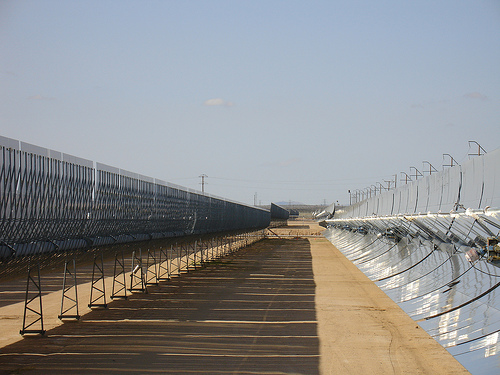
U.S. Energy Secretary Steven Chu recently announced that $100 million in American Recovery and Reinvestment Act funding will be made available to accelerate innovation in green technology, increase America's competitiveness, and create new jobs. Chu states:
"This is about unleashing the American innovation machine to solve the energy and climate challenge, while creating new jobs, new industries and new exports for America's workers."
The March 2 announcement, the third funding opportunity under DOE's Advanced Research Projects Agency-Energy (ARPA-E) program, focuses on grid-scale energy storage, electrical power technology, and building energy efficiency. More information is available at www.energy.gov/news/8696.htm.
Grid-Scale Rampable Intermittent Dispatchable Storage (GRIDS), often referred to as massive electricity storage (MES), is of particular interest to chemical engineers, and has been the subject of several CEP articles and a white paper by AIChE's Government Relations Committee.
Check out These Articles:
o "Harnessing Natural Energy," by Travis W. Walker, March 2008, pp. S23-S28.
o "Electricity Storage: The Achilles' Heel of Renewable Energy," by Bernard S. Lee and David E. Gushee, March 2008, pp. S29-S32.
o "Renewable Power: Not Yet Ready for Prime Time," by Bernard S. Lee and David E. Gushee, April 2009, pp. 22-25.
o "Massive Electricity Storage," an AIChE White Paper, AIChE Government Relations Committee, by Bernard S. Lee and David E. Gushee, June 2008.
Conceptually, MES can be likened to a huge battery that is connected to the grid and to a wind generator. The battery stores energy when the amount generated exceeds the demand from the grid, and releases stored energy when the demand exceeds the amount generated. The battery allows dispatchable power to be delivered to the grid.
This new funding opportunity aims to help the U.S. assume global technology and manufacturing leadership in the emerging and potentially huge global market for stationary electricity storage infrastructure. The program seeks to develop revolutionary new storage systems that provide energy, cost, and cycle life comparable to pumped hydropower, but which are modular and can be widely implemented at any location across the power grid. Specifically, two areas will be considered:
- proof-of-concept storage component projects focused on validating new, over-the-horizon electrical energy storage concepts, and
- advanced system prototypes that address critical shortcomings of existing grid-scale energy storage technologies.
Ultimately, technologies developed through this program will be scalable to the megawatt and megawatt-hour levels of power and energy capacity. This program focuses on technology prototyping and proof-of-concept R&D efforts rather than pilot demonstration projects.
To ensure that the market and operational reforms necessary to efficiently integrate variable energy resources (VERs) into the nation's power grid, the U.S. Federal Energy Regulatory Commission (FERC) is examining its regulatory policies and seeking comments on it should reform any of its rules or procedures. Read about that in my blog post "Policy Options for Integrating Renewable Energy into the Grid."
I'd love your thoughts on this news.
image:
Related articles by Zemanta
- Power Tree Corp Announces Manufacturing Facility for Its Grid Scale Energy Storage System (eon.businesswire.com)
- Smart Grid Consumer Collaborative Forms to Foster Consumer Adoption of the Smart Grid (eon.businesswire.com)


